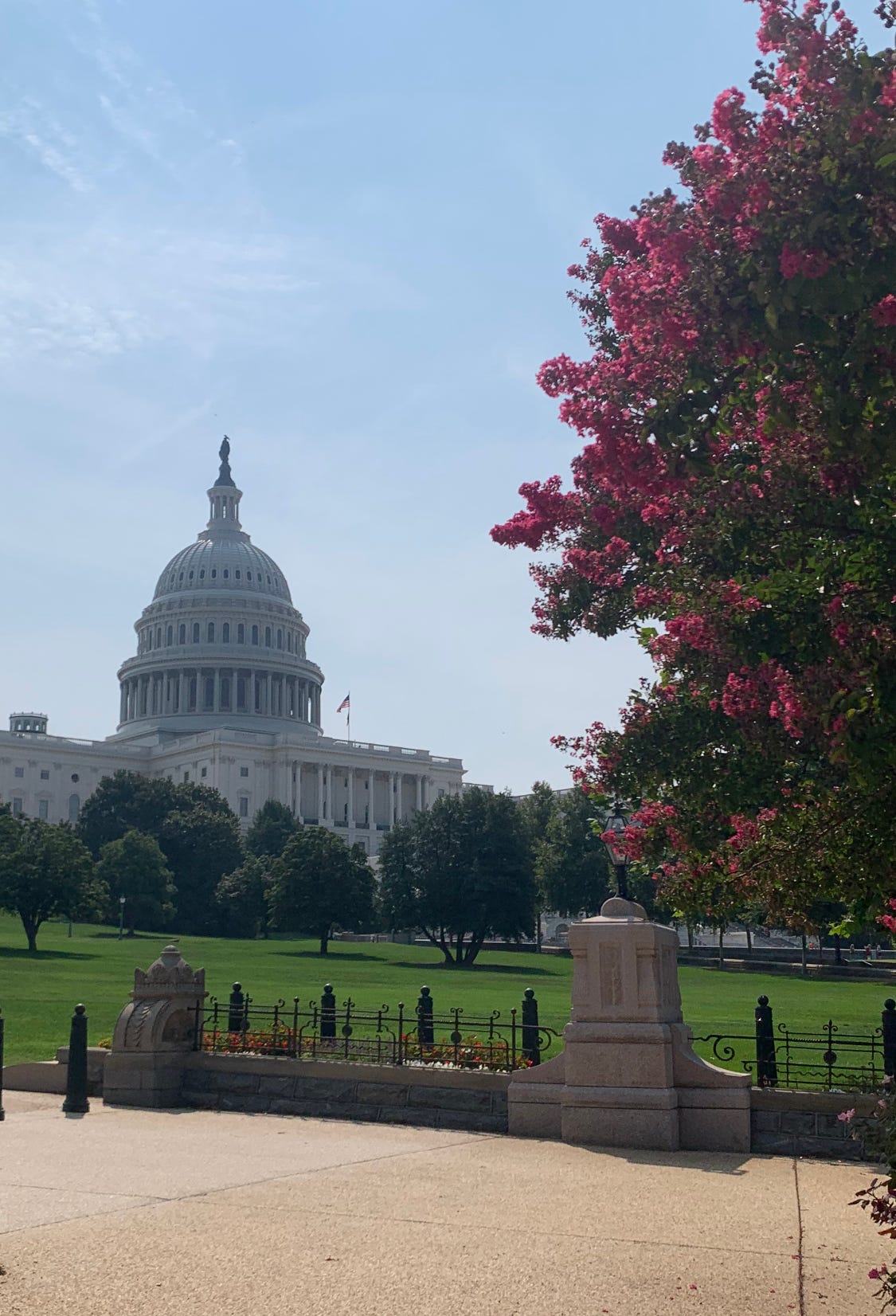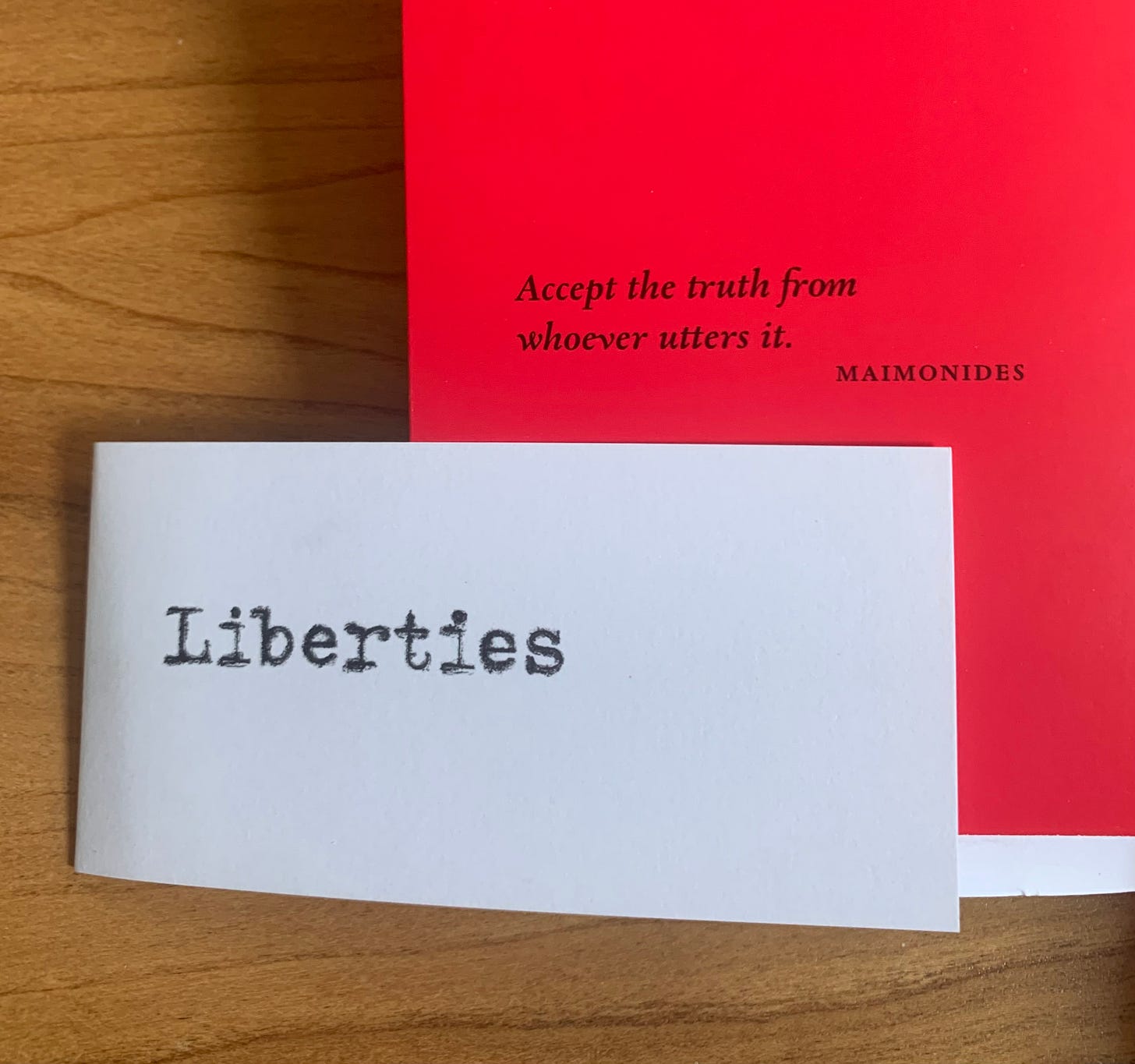This past Monday, I took my first trip to Washington, D.C. I had never felt compelled to visit until this point in my life. But seeing the monuments and principal buildings of our nation’s government for the first time was utterly moving.
A few steps from the train was the Capitol, just eight short months ago the site of mayhem. But on this morning, it was serene as could be, surrounded by 90 degree haze and swarmed by no one other than errant dragonflies.
As I continued down the mall, I was struck by the fragility of the American idea, and the fact that there is little that binds us together as a country beyond high-flying concepts of freedom and equality. But I also felt a pull in my heart toward the validity of defending and protecting these sacred ideas.
In my exploration of the city, I walked through the Dupont Circle area and passed by the office of the exciting new publication Liberties. A journal of politics and culture, it is neither leftist nor right-wing, but embraces freedom of thought and, as far as I can tell, a kind of enlightened moderation.
A recent essay in the journal by Anthony Julius contains a relevant paragraph:
“‘Censorship’ today does not operate as a veto. It operates as a cost. The question for the writer or the artist is not, Can I get this past the censor? It is instead, Am I prepared to meet the burden, the consequences, of publication and exhibition— the abuse, the personal and professional danger, the ostracism, the fusillades of digital contempt? These costs, heterogeneous in everything but their uniform ugliness, contribute to the creation of an atmosphere. It is the atmosphere in which we now live. The scandalizing work of art may survive, but few dare follow.”
There is also a new publication coming out of Manhattan that gives me hope. It is called The Drunken Canal. Blasphemous, sacrilegious, and indeed inebriated, it can be found in plastic bins near Seward Park and was created during the worst of the pandemic by young New Yorkers. Unsurprisingly, it was subjected to a sneering and sanctimonious review by the New York Times.
The Canal dares to publish sentences like “this world of art is not governed by morals— ideologies,” by a young filmmaker named Ben Howley who analyzes the firing of musician Ariel Pink after a protest in favor of the former president. After all, “artists do transgressive things,” as Tucker Carlson rightly says in his interview with Pink. This may be a moment to consider an idea expressed on the inner flap of the aforementioned publication.
As the author Thomas Chatterton Williams says, “So many people act like you’re supposed to have a side to whom you’re loyal, right or wrong. You’re not supposed to have a side. You’re only supposed to have values.” Christopher Hitchens similarly wrote, “One of the hardest things for anyone to face is the conclusion that his or her ‘own’ side is in the wrong when engaged in a war. The pressure to keep silent and be a ‘team player’ is reinforceable by the accusations of cowardice or treachery that will swiftly be made against dissenters. Sinister phrases of coercion, such as ‘stabbing in the back’ or ‘giving ammunition to the enemy’ have their origin in this dilemma and are always available to help compel unanimity.”
There is too much empty talk today about community, and not enough real talk about individuality. If one’s own side has abandoned cherished principles of freedom of speech and expression, however, it is still not advisable to capitulate to illiberalisms on the other end of the spectrum. I am interested in the continuation of the liberal project, and increasingly devoted to its maintenance. One of the reasons I called this platform “The File” is because I want to collect examples of the fight for free speech, especially as they pertain to aesthetics, style, and fashion, and aggregate them as one might in a filing cabinet. The File is meant to be an aggregation above all else. And through amassing these small reflections of hope, along with news of other pro-freedom publications, I aim to provide encouragement.








